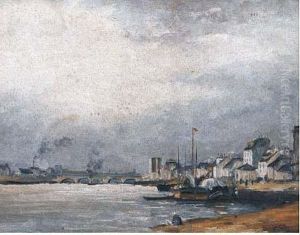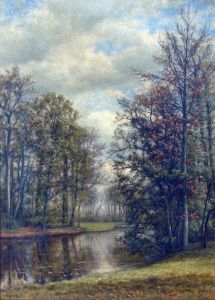Lodewijk/ Louis F.J. Dupuis Paintings
Louis F.J. Dupuis, also known as Lodewijk Frederik Johan Dupuis, was a Dutch artist born on December 18, 1833, in Breda, the Netherlands. He was primarily known for his work as a genre painter, though he was also skilled in portrait painting and landscapes. Dupuis trained at the Royal Academy of Art in The Hague, where he honed his skills in the fine arts under the guidance of established painters of the time.
During his career, Dupuis exhibited a strong preference for scenes of everyday life, capturing the nuances of the bourgeoisie and peasant life of the 19th century with a particular focus on the interiors of homes and the activities within. His work displayed a fine attention to detail and a sensitivity to the subtleties of light and shadow, which gave his paintings a lifelike quality. Dupuis was also known to incorporate elements of Dutch Realism, a style that was prominent in the Netherlands during his lifetime.
Louis Dupuis' art was well-received, and he participated in several exhibitions, gaining recognition for his contributions to Dutch genre painting. He was a part of the artistic community that included some of the most notable Dutch artists of the 19th century, which allowed him to remain influential and to continuously develop his artistic style. Despite his success, Dupuis did not achieve the same level of fame as some of his contemporaries, and as a result, he is less well-known today outside of the Netherlands.
After a successful career, Louis F.J. Dupuis passed away on January 13, 1899, in The Hague. His works remain a part of Dutch cultural heritage and can be found in various art collections and museums in the Netherlands. They continue to be appreciated for their contribution to the genre painting of the era and offer a window into Dutch society during the 19th century.

